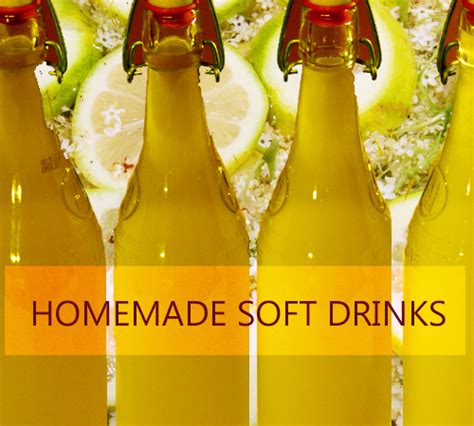As ingrained and famous that it might be that the beverage of choice to the British is a nice cup of tea, there have been many other traditional soft drinks in British history that quenched our thirst. Traditional drinks range from Ginger Beer, Dandelion and Burdock to the refreshing elderflower cordial made from the flowers from Elder flower.
These locally made beverages from old traditional recipes are beginning to under go a bit of a renaissance lately. Many of the traditional drinks are coming back to the shelves of our supermarkets as customers are demanding for something different to the current ubiquitous soft drinks on offer.
Dandelion and Burdock
Drunk in the British Isle since the 1200 BC, Dandelion and Burdock has been quenching the thirst of British subjects.
The time proven recipe calls for Dandelion and Burdock to be made from fermented dandelion (Taraxacum officinale) and burdock (Arctium lappa) roots which grow well in the UK climate.
Listed here is a simple Dandelion and Burdock recipe to create your own homemade dandelion and burdock drink.
- Wash two large dandelion and burdock roots clean, cut the roots into small pieces. Put chopped roots into a pan with 2.2 litres/4 pints water and boil for 30 minutes.
- Add 500 g sugar, 2 tbs black treacle and one juice of a lemon to 4 pints of water and simmer.
- After 30 minutes, strain off the roots and leave the liquid to cool.
- Add the yeast to some warm water so it starts fermenting.
- When the root liquid is tepid, add in the yeast.
- Leave it to ferment in the bucket for 3-4 days.
- Put into bottles and drink after a week.
Ginger Beer
It originated in England in the mid-1700s and reached its peak of popularity in the early 1900s.
Ginger Beer that has naturally fermented has a different taste to the carbonated ginger beer found in mass produced ginger beer. Typical traditional ingredients in fermented Ginger Beer would include fresh Jamaica ginger root, fresh lemons, and special brewer’s yeast. This process results in a fiery citrus zesty flavour with hint of fresh home-baked bread due to the yeast. The fermentation process of many traditional Ginger Beers can be around 11% alcohol content. However, versions of ginger beer can be made with a low alcohol content by cooling the ginger beer to halt the fermentation process midway but as a consequence there will be less fizz in the ginger beer.
Elderflower Cordial
Nothing captures the essence of warm English summer then elderflower cordial. Made from sugar, water and the flowers of the elderflower to form an aromatic syrup, that when diluted with sparkling water is very refreshing.
During the short season of May to June, Elderflower heads are gathered and soaked in a concentrated sugar solution. The flavour gradually infuses into the sugar solution, the Elderflower heads are removed from the solution and at the same time lemon juice is usually is added to help preserve the cordial.
Barley Water
Barley water is a popular centuries old British soft drink which can be readily made at home. The Barley water recipe is simple to make,
- Place the barley into a sieve and pour over boiling water to scald and cleanse the barley to help produce less cloudy barley water.
- Peel and squeeze the juice from an unwaxed lemon.
- Place the barley, lemon rind with water into a saucepan and simmer for 20 minutes.
- Strain through muslin cloth.
- Add the lemon juice and sugar to taste.
- Allow to cool and refrigerate before drinking.
Drink within 24 hours of making the barley water.
Apparently, barley water is a wonderful natural way to control urinary tract infection during pregnancy.
As you have spent the time and effort creating you own artisan traditional beverage, the finishing touch is in the presentation. Nothing quite beats the look or feel drinking your very own dandelion and burdock from a vintage glass bottle or sitting outside in the afternoon sun enjoying some refreshing chilled barley water and lemon poured from a glass pitcher partially filled with ice.
The Author:
I always try to get and share useful information with others. Mobile Themes
